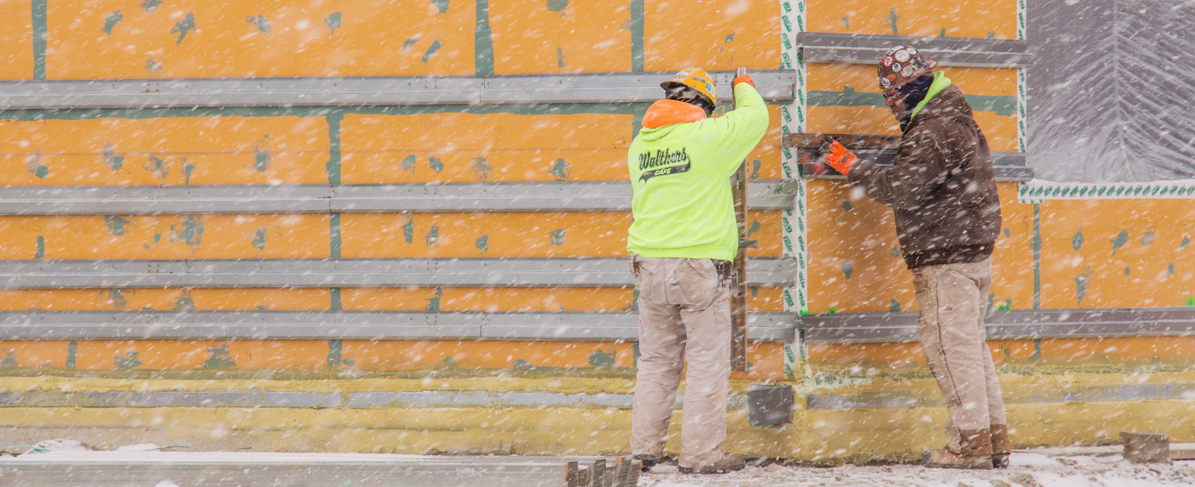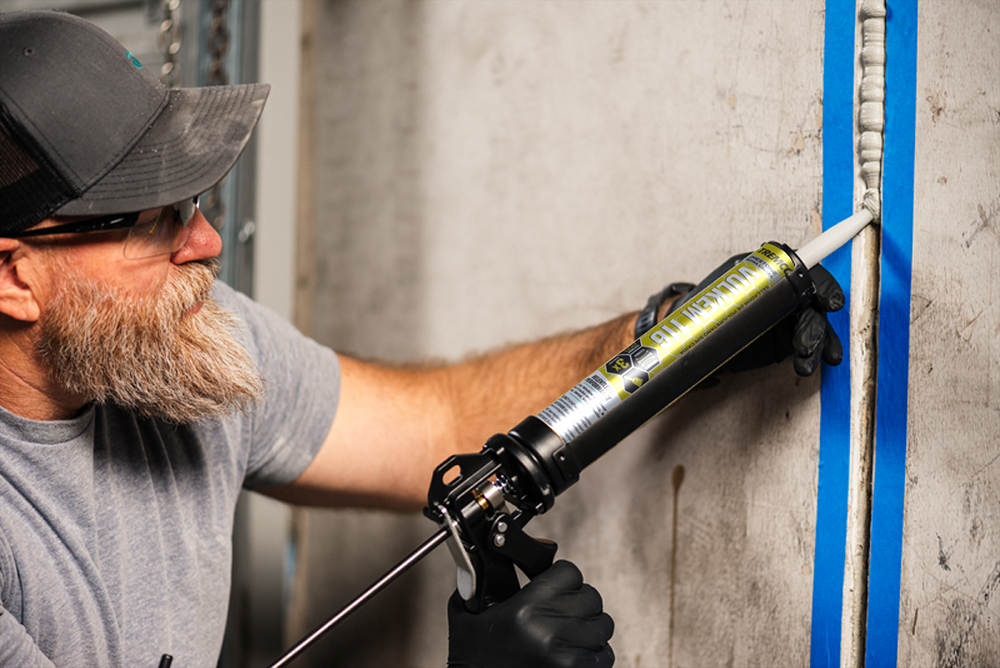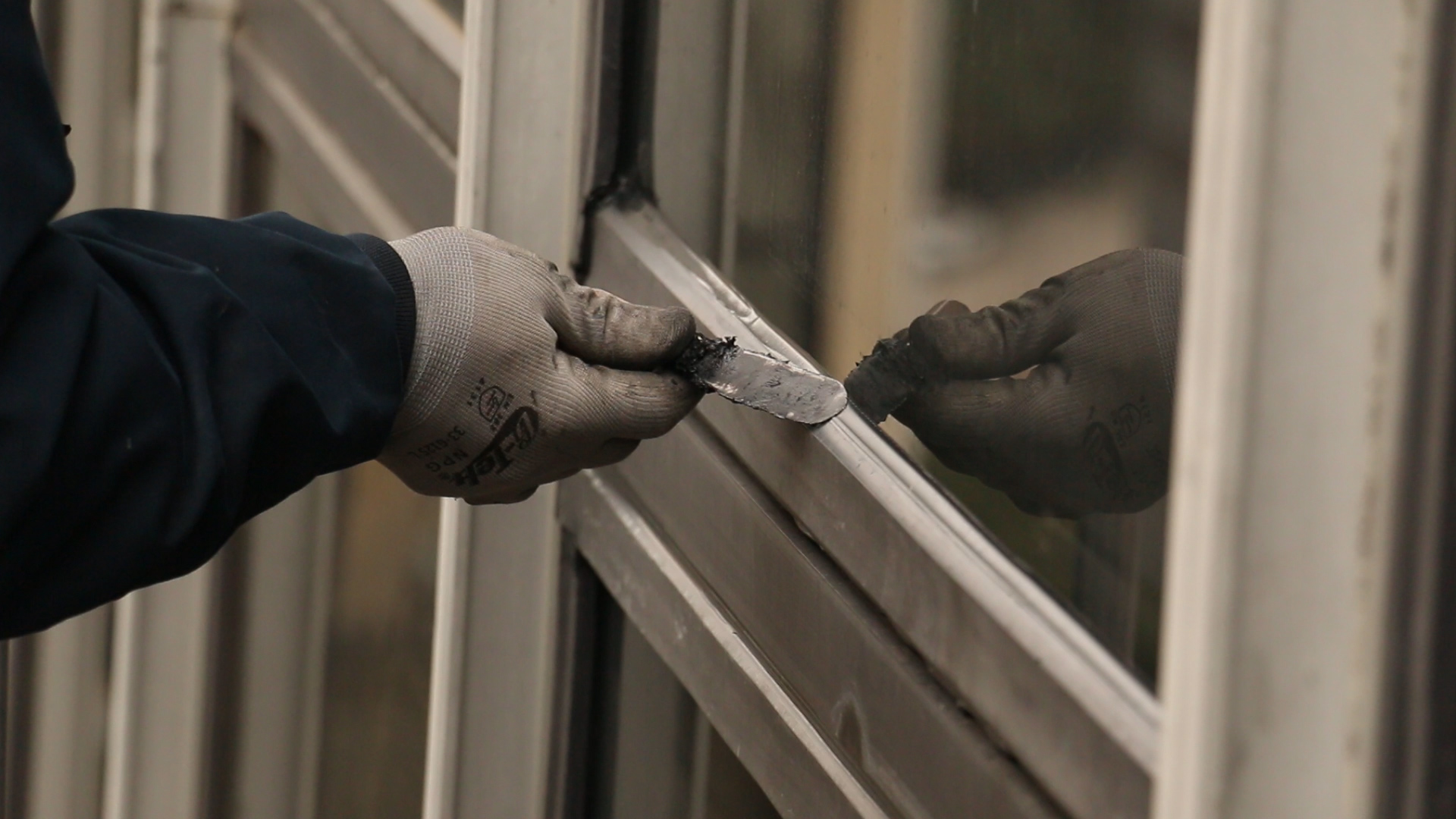Precautions for Applying Sealant in Cold Temperatures
Avoid weather delays on your construction project by learning how to properly apply sealants in cold temperatures.

Avoid weather delays on your construction project by learning how to properly apply sealants in cold temperatures.

During the winter months, it is important to consider how colder temperatures can influence liquid sealants and their performance on exterior construction projects. Silicone, butyl and polyurethane sealants are all affected by the cold, with common concerns surrounding products’ ease of use, delayed cure time and inadequate adhesion. Any of these challenges can delay the progress of a project, so it’s important to plan ahead to minimize weather-related setbacks. To learn about installing waterproofing in the winter, refer to this blog post.
 Optimally, caulking should be applied between 40°F and 80°F (4°C and 27°C). However, that is not always possible, which is why it is essential to understand the environmental factors that impact sealant technologies and the preventative measures contractors can take to avoid installation problems or product failure.
Optimally, caulking should be applied between 40°F and 80°F (4°C and 27°C). However, that is not always possible, which is why it is essential to understand the environmental factors that impact sealant technologies and the preventative measures contractors can take to avoid installation problems or product failure.
The winter brings with it several climatic conditions that can affect both sealant materials and substrates.
Regardless of the sealant chemistry, here are some recommendations to optimize sealant performance in cold temperatures.
Liquid sealants have a reduced flow rate when they’re cold that can make it physically challenging for installers to extrude or gun out the product from the tube, cartridge or sausage it was packaged in. The thicker viscosity can then be difficult to properly trowel or tool. To alleviate this, place your primers and sealant at room temperature, such as indoors or in a heated trailer, at least 24 hours prior to application to ensure adequate product viscosity. This preparation is especially important for water-based sealants that can freeze when exposed to frigid temperatures.
Make sure to clean any dew, ice, frost or water from the substrate with an approved solvent, such as methyl ethyl ketone (MEK), toluene, or xylene that are more effective in lower temperatures compared to isopropyl alcohol (IPA). Allow to dry thoroughly before applying a primer or sealant.

When possible, protect your substrates from rain and snowfall with a tarp or similar covering to minimize excess moisture before and during the sealant application process.
Even with the products warmed ahead of time, low outside temperatures will delay the cure of most caulks. Be sure to factor in this extended time frame when scheduling subsequent trades and regularly look to the weather forecast in case you need to protect any building material from precipitation prior to them curing fully.
In general, any sealant project should be evaluated on an individual basis since environmental conditions can vary significantly from day to day. If you have further questions around cold weather sealant application procedures, consult your local sales representative or distributor or refer to Tremco’s Cold Temperature Sealant Caulking Recommendations technical bulletin.